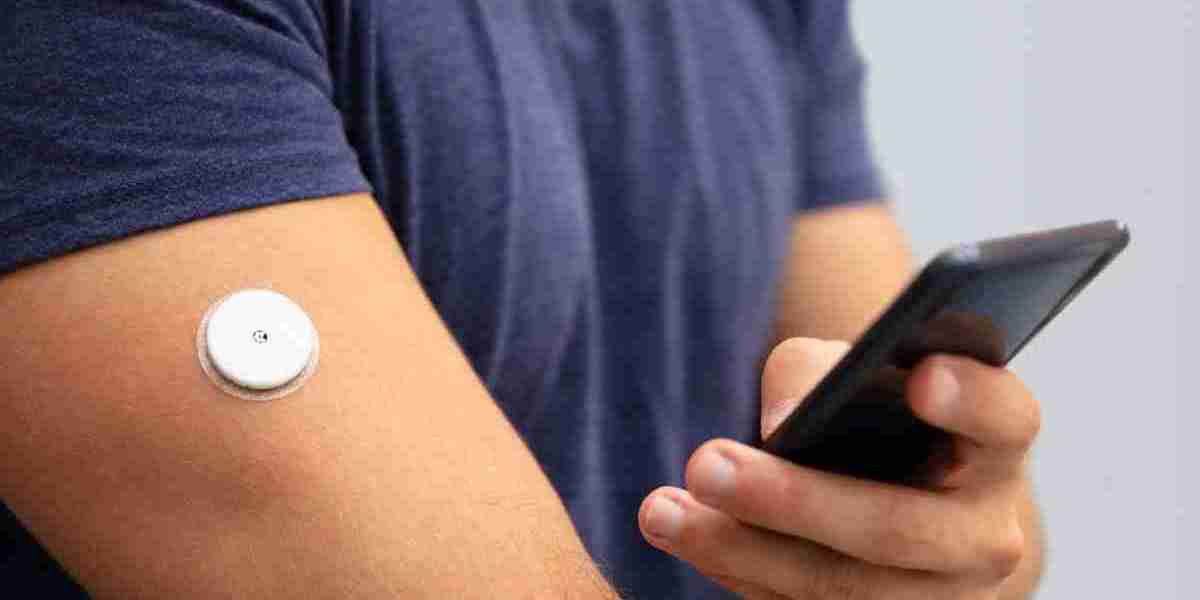Continuous Glucose Monitoring (CGM) Market Research: Trends, Drivers, and Future Outlook
Continuous Glucose Monitoring (CGM) Market technology has revolutionized diabetes management by offering real-time glucose readings, enabling patients and healthcare providers to monitor blood sugar levels more effectively and make timely decisions. The CGM market has experienced significant growth in recent years, driven by increasing diabetes prevalence, technological advancements, and rising awareness about diabetes management. This article explores the current landscape of the CGM market, key drivers influencing its growth, emerging trends, challenges, and future outlook based on market research insights.
Overview of Continuous Glucose Monitoring (CGM)
CGM systems consist of small wearable devices that measure glucose levels in interstitial fluid just beneath the skin. Unlike traditional finger-prick blood glucose testing, CGM devices provide continuous data throughout the day and night, allowing users to track glucose fluctuations and trends. This continuous data stream helps reduce hypoglycemia and hyperglycemia episodes and improves overall glycemic control.
The primary components of a CGM system include a sensor inserted under the skin, a transmitter that sends data wirelessly, and a receiver or compatible smartphone app that displays glucose readings. Recent developments have also integrated CGM with insulin pumps, creating hybrid closed-loop systems that automate insulin delivery based on glucose readings.
Market Size and Growth Dynamics
The global CGM market was valued at approximately USD 5 billion in 2023 and is projected to grow at a compound annual growth rate (CAGR) of around 15-18% from 2024 to 2030. This robust growth is attributed to several factors:
Rising Prevalence of Diabetes: According to the International Diabetes Federation, over 537 million adults worldwide are living with diabetes, a number expected to reach 643 million by 2030. This growing patient pool drives demand for effective glucose monitoring solutions.
Technological Advancements: Innovations such as improved sensor accuracy, longer sensor wear times, and integration with mobile devices and insulin pumps have made CGM devices more user-friendly and reliable.
Increasing Awareness and Adoption: Healthcare providers increasingly recommend CGM to both Type 1 and Type 2 diabetes patients, particularly those requiring intensive insulin therapy.
Favorable Reimbursement Policies: Expansion of insurance coverage and reimbursement for CGM devices, especially in developed markets like the US and Europe, has improved accessibility for patients.
Key Market Segments
The CGM market can be segmented based on product type, end-user, and geography:
Product Type:
Real-time CGM (rtCGM): Provides continuous glucose readings in real time, allowing proactive management.
Intermittently Scanned CGM (isCGM): Also called flash glucose monitoring, where users scan the sensor to get glucose readings.
rtCGM holds the larger market share due to its ability to provide alerts for hypo- and hyperglycemia, enhancing safety.
End Users:
Hospitals and clinics
Home care settings
Research institutions
The home care segment is expanding rapidly as more patients adopt self-monitoring technologies.
Geography:
North America dominates the market, driven by high diabetes prevalence, advanced healthcare infrastructure, and strong reimbursement policies.
Europe follows closely, with increasing adoption in countries like Germany, the UK, and France.
The Asia-Pacific region is expected to register the highest CAGR due to the large diabetic population, improving healthcare facilities, and rising awareness.
Emerging Trends and Innovations
Several notable trends are shaping the future of the CGM market:
Integration with Artificial Intelligence (AI) and Machine Learning: AI algorithms analyze CGM data to provide predictive insights and personalized recommendations, helping patients optimize their therapy.
Development of Non-invasive CGM Devices: Researchers are working on sensors that do not require skin penetration, which would significantly increase patient comfort and adoption.
Expanded Use in Type 2 Diabetes: While CGM was initially used mainly for Type 1 diabetes, increasing evidence supports its benefit in Type 2 diabetes management, particularly for insulin-dependent patients.
Wearable Tech and Digital Health Ecosystems: Integration with smartphones, smartwatches, and health platforms enables better data sharing with healthcare providers and caregivers.
Hybrid Closed-Loop Systems: Combining CGM with automated insulin pumps for a semi-automated insulin delivery system is gaining traction, reducing the burden on patients.
Challenges Facing the CGM Market
Despite its promising outlook, the CGM market faces several challenges:
High Costs: CGM devices and sensors can be expensive, limiting access in low- and middle-income countries.
Sensor Accuracy and Calibration: Although accuracy has improved, occasional sensor errors and the need for calibration with finger-prick tests remain concerns.
User Compliance: Continuous wearing of sensors can cause skin irritation or discomfort, impacting long-term compliance.
Regulatory Hurdles: Obtaining regulatory approvals in various countries can delay market entry for new products.
Competitive Landscape
The CGM market is highly competitive, with key players including Abbott Laboratories (Freestyle Libre), Dexcom, Medtronic, Senseonics, and Roche. These companies invest heavily in research and development to introduce next-generation CGM systems with enhanced accuracy, ease of use, and integration capabilities.
Strategic partnerships, mergers, and acquisitions are common to expand product portfolios and geographic reach. For example, Dexcom’s collaboration with major insulin pump manufacturers illustrates the trend toward integrated diabetes management systems.
Future Outlook
The future of the CGM market looks promising, fueled by ongoing technological innovations, rising global diabetes burden, and growing acceptance of digital health tools. Market research indicates an increasing shift toward personalized and automated diabetes management solutions, with CGM at the core.
As sensor technology becomes more affordable and non-invasive options come to market, CGM adoption is expected to rise dramatically worldwide. Additionally, regulatory frameworks are evolving to support faster approvals, facilitating innovation diffusion.
Healthcare systems and insurers are likely to expand coverage, recognizing that improved glucose monitoring reduces costly diabetes complications in the long run.
Conclusion
Continuous Glucose Monitoring represents a paradigm shift in diabetes care, enabling real-time, actionable insights for patients and clinicians. Market research underscores a rapidly expanding industry driven by technological advancements, increasing diabetes prevalence, and improved healthcare infrastructure.
While challenges like cost and sensor accuracy persist, ongoing innovation and favorable policies are set to propel the CGM market to new heights in the coming decade. For stakeholders—including device manufacturers, healthcare providers, and policymakers—understanding these market dynamics is critical to maximizing the benefits of CGM technology and improving patient outcomes globally.




